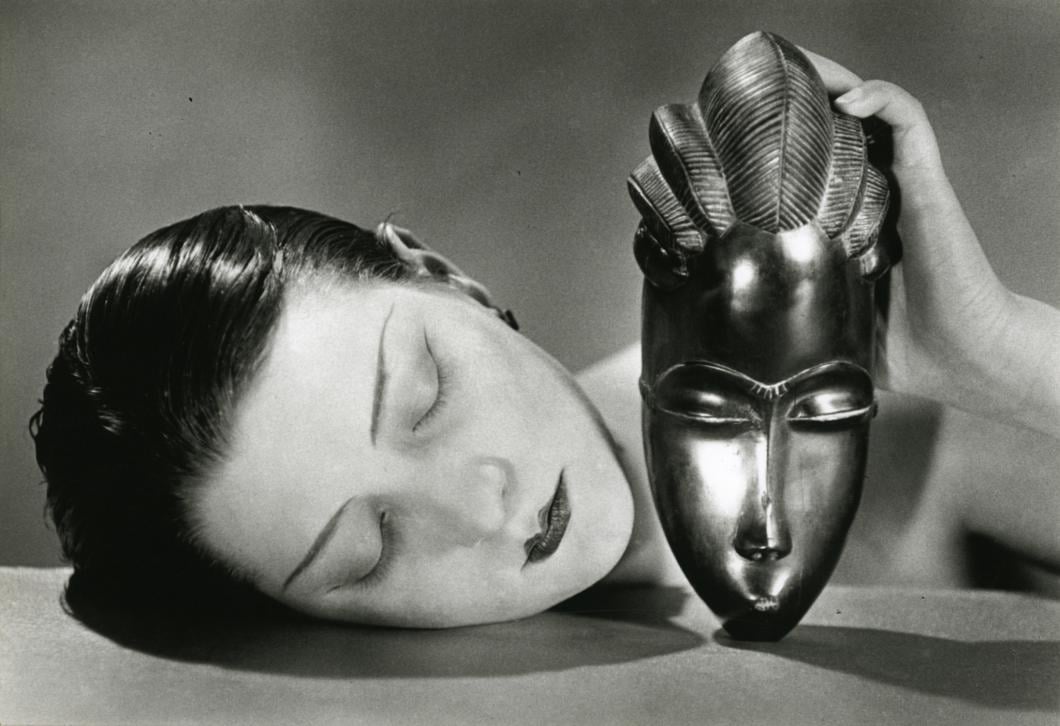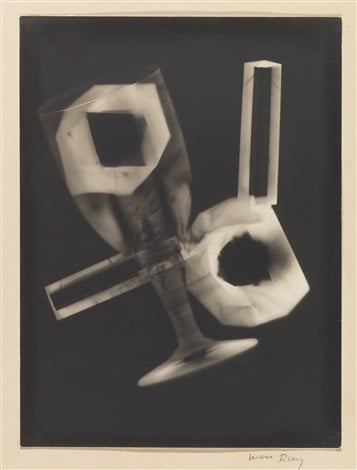People
8 Things We Learned from Man Ray on His 125th Birthday
Protip: art can stand to have a sense of humor.
Lauren Palmer, August 27, 2015
 Carl Van Vechten, Portrait of Man Ray and Salvador Dali, Paris (1934).
Carl Van Vechten, Portrait of Man Ray and Salvador Dali, Paris (1934). Photo: U.S. Library of Congress, prints and Photographs Division/Wikipedia.
Man Ray (born Emmanuel Radnitsky) is best known for his surrealist photography, but he of course also painted, sculpted, and made films. Along with fellow Surrealist Marcel Duchamp, he sought to bring Dada to the US. But he emigrated to France in 1921 and spent the majority of his life among the modern Parisian set.
In celebration of his 125th birthday, here are some words and works by the inimitable artist.

Man Ray, Black and White (1926).
Photo: Courtesy of VG Bild-Kunst, Bonn.
On Inspiration:
“Personally, I have always preferred inspiration to information.“
On Humour in Art:
“I have been accused of being a joker. But the most successful art to me involves humor.”

Man Ray, Rayograph (1922).
Image: artnet, courtesy Cheim & Read.
On his Rayographs:
“As I waited in vain a couple of minutes for an image to appear, regretting the waste of paper, I mechanically placed a small glass funnel, the graduate and the thermometer in the tray on the wetted paper,” Ray wrote in his autobiography, Self Portrait, “I turned on the light; before my eyes an image began to form…”
On Remembering Dada and Surrealism:
“It was very tense. It was very bitter. And there was no humor in it.”

Man Ray, Self Portrait with Gun (1932).
Image: WikiArt.
On Ordinary Objects:
“I passed by a hardware shop and saw a flat iron in the window, I said there’s an object which is almost invisible, may be I could do something with that…what could I do to add something in it that is provocative?”
On Seeing:
“I have only to look at something, anything, and it can instantaneously give me an idea. Whether a face, an object, or an event, it can immediately suggest a shape to create…”

Man Ray, Les larmes (1932).
Image: WikiArt.
On the Crucial Difference between Dada and Surrealism:
“It would be not quite right to consider the Surrealist movement a continuation or an evolution of the Dada movement. It is exactly, in many respects, the opposite because it is constructive, whereas Dada was destructive of the contemporary arts. Surrealism tries to replace, not to annihilate.”
On How to Get Over an Ex:
Man Ray’s breakup with artist Lee Miller is purported to have prompted him to create a revision of the metronome Indestructible Object(1923).
In the 1932 version, Man Ray included the instructions: “Cut out the eye from a photograph of one who has been loved but is seen no more. Attach the eye to the pendulum of a metronome and regulate the weight to suit the tempo desired. Keep going to the limit of endurance. With a hammer well-aimed, try to destroy the whole at a single blow.”

Lothar Wolleh, Man Ray (1974).
Image: Wikipedia.
MoMA The Museum of Modern Art
"I think Man Ray is ... willing, more than Duchamp ever was, to try on the ... notion that a hunk of wood stuck in concrete might really and truly be the most beautiful sculpture in America, if only you found the right way of thinking about it and it was the right hunk of wood."–Blake Gopnik, artnet
Learn more about Man Ray's submission for "Dadaglobe," a lost Dada anthology that has been reunited for our current exhibition "Dadaglobe Reconstructed," on view through September 18.

沒有留言:
張貼留言